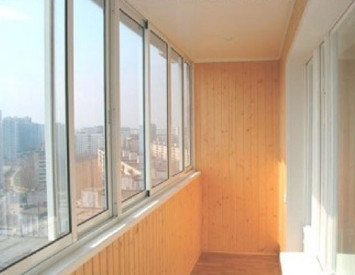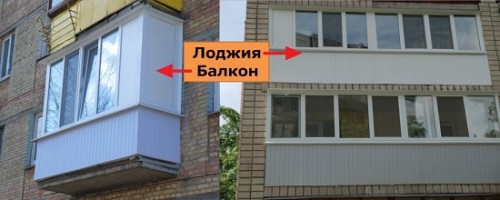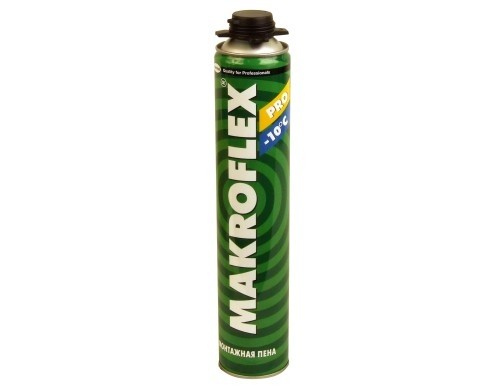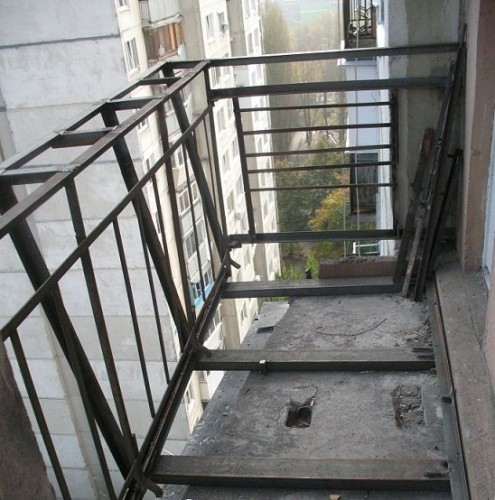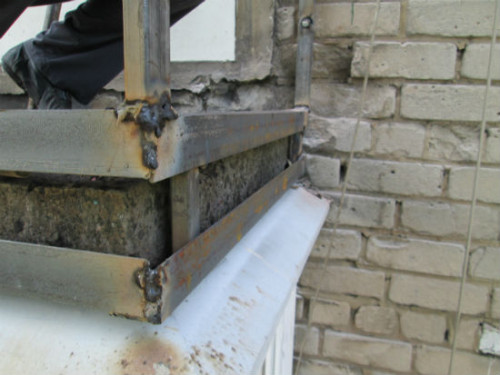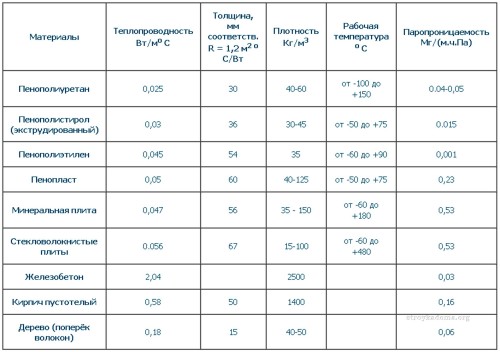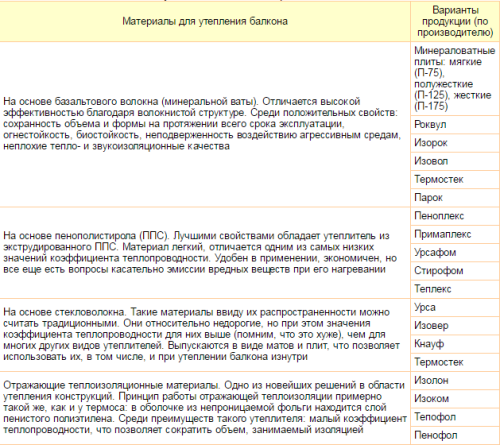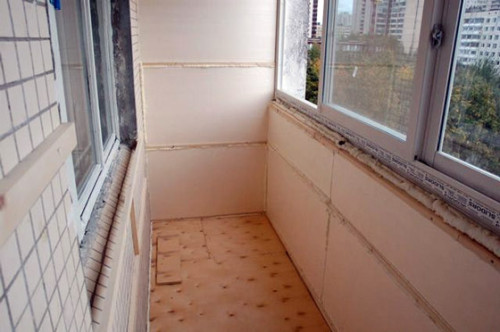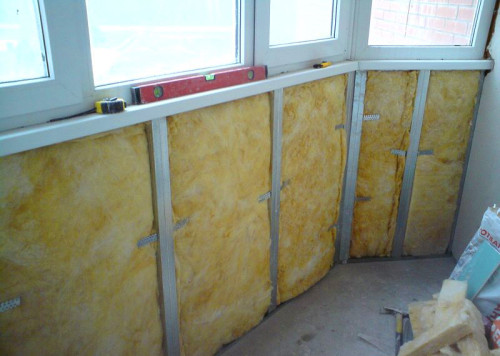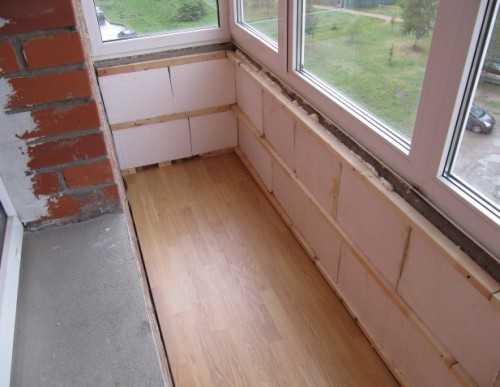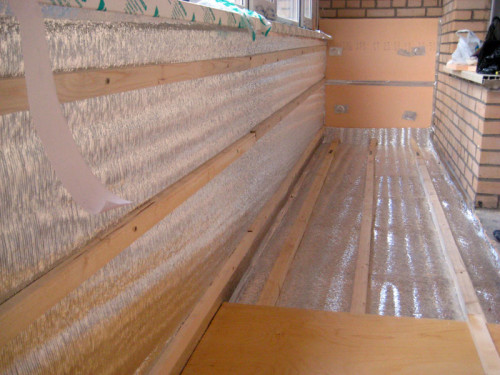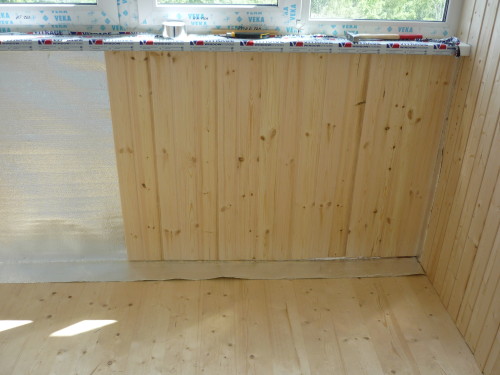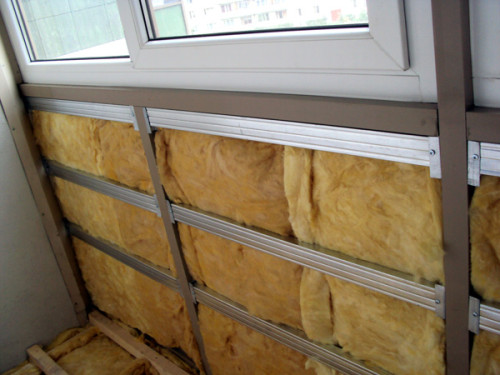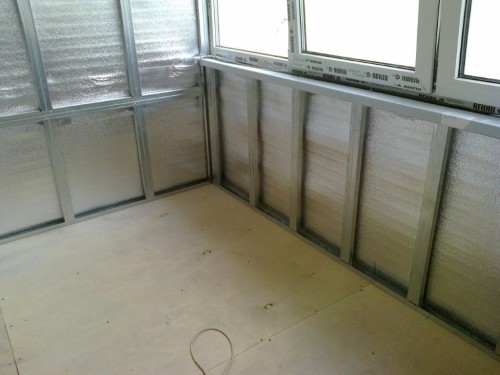Each owner of an apartment with a balcony or loggia sooner or later thinks about their insulation. This procedure allows you to increase the useful living area, which always lacks, no matter how spacious the apartment is. Incredibly a lot of firms and private masters providing such services, and this leads to suspicions that work may not be so complicated and specific. In fact, it turns out that any hardworking owner can insulate the balcony with your own hands if he thoroughly studies the theory.
Content
The main points of the balcony insulation
First of all, it is necessary to identify the main differences between balconies and loggias. The balcony is called the fenced site, which is issued outward. The outer line of the loggia is flush with the wall of the house, it is, as it were, it is drowned inside and for this reason to warm the loggia is much easier and cheaper than the balcony, because it will be necessary to protect only the outer wall from moisture and cold, and not the entire perimeter.
From the balcony you can make a functional continuation of the living room or a separate room: a nursery, office, a workshop or just a cozy place for relaxation. However, it is important to prevent a number of common mistakes that are not only the amateurs, but also some of the declared professionals.
Important points of insulation of balconies and loggias:
- Glazing - the most important oversight is the installation of double -glazed windows. It would seem that this is? But the fact is that some balconies are not intended for warm glazing. If the house of the old building, the balcony plate may simply not withstand the weight of the window structure, and therefore it must first be examined and strengthened. We recommend paying attention to articles " Glazing the balcony in Khrushchevka", And " Glazing with panoramic windows».
- Slots - to create a warm and cozy atmosphere of some windows, it is not enough and after installing the double -glazed windows you need to close all the cracks through which the heat will leave. To do this, use sealants and mastic on a polyurethane basis - they are durable, durable and are not afraid of moisture.
- Insulation - it is very important to choose the right insulation, and here we are talking not so much about the material itself, but about its thickness. The preservation of heat indoors and the quadrature of this very room depend on this parameter. So, if you live in the south, an overly thick insulation will only take precious centimeters of the area, and for the northern regions it will be an acquitted victim. Some materials have low thermal conductivity, which means they are able to retain heat well with a small thickness, for example, extruded polystyrene foam or foam. We will discuss this in more detail a little lower.
- Fasteners - some unscrupulous construction companies save on fasteners, hoping for the ignorance of customers in this matter. Therefore, even if you do not dare to insulate the balcony with a foam or foam, you must be able to understand theory in order to control the process and not to deceive yourself. If glue is used, then it should be a special atmosphere glue for foam or polystyrene foam. For internal insulation, only it is usually enough, but the external also needs dowels-zontics. So they should be located around the perimeter and per 1 m² should account for about 10 pcs. The seams between the sheets of insulation after fixation must be filled with mounting foam to prevent the appearance of cold bridges.
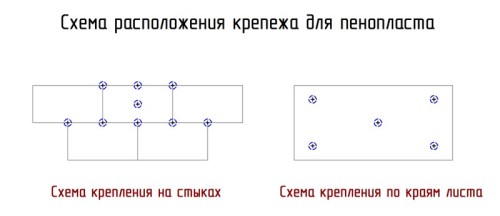
- Finishing - if the insulation was carried out outside, it is better to entrust the exterior decoration to specialists, especially when it comes to high -rise work. As for the insulation of the balcony from the inside, here you can truly “walk around” and give free rein to fantasy-the assortment of finishing materials for internal work is very large. On top of the heater plates, you can apply plaster or close it with plasterboard slabs, chipboard or MDF, then cover the wall with decorative plaster, tiles, panels, paint, lining, etc.
- Additional heating is an optional moment, but if possible, it will be useful to place a battery, air conditioning on the balcony, make a warm floor or at least put a heater.
The video about the insulation of the balcony tells about the main mistakes that amateurs and professionals make in the performance of work:
When to insulate the balcony?
Many are interested in whether it is possible to carry out thermal insulation work on the balcony in the cold season? Of course, in the summer, the work proceeds faster and more convenient, but the situations are different, and this moment is impossible to leave without attention. The first thing to understand if you are going to insulate the balcony in winter - many building materials at low temperatures behave differently. For example, the classic cement-sand solution used to strengthen the parapet of the balcony will freeze faster than grab, so there is no need to talk about the strength of such a design. Therefore, instead of such a mixture, you will have to use more expensive compositions or adhesives with anti -frozen additives.
Installation foam, which is also indispensable when warming balconies, also changes at low temperatures. On sale there are “summer” and “winter” foams with various compositions, and, as you might guess, “winter” are more expensive. But the problem is not only in cost, but also in the fact that the specific composition of the foam can be poorly combined with other thermal insulation materials. A great example is some brands of “winter” foam, which corrode polystyrene and polystyrene foam, as well as paintwork and plastic.
In addition to low temperature in winter, it is also very wet, and humidity does not affect some types of insulation. Foam is not afraid of water, which can not be said about foam or mineral wool insulation. Also, mastics, adhesives and foam will not stick to wet walls. Therefore, if you still decide to insulate the balcony in the winter, first make sure of the maximum possible waterproofing: work with the roof, parapet, clog the cracks and put the windows. Most building and finishing materials are designed for the temperature of the work from +5C and higher, therefore they can be used in cool, but relatively dry room.
Strengthening the balcony
If you live in the old house of Soviet building (or earlier), in 80% of cases the balcony plate needs to be further strengthened. This moment greatly complicates the work, but it is absolutely necessary for the comfortable, safe and durable use of the balcony. The load provided on the stove from the window structure, insulation, decoration and other elements of insulation can be more than 700 kg, so it is very important to make sure that the plate can withstand.
Today, several methods of strengthening the balconies are practiced, the choice of which depends on the initial state of the plate, as well as the possibility of installing supporting elements. If the plate is relatively strong, it is taken as a basis, setting only a few additional points of the supports. If it is covered with cracks and crumbles, a new metal frame, which is firmly fixed on the building, is built, which is built on it. In especially deplorable cases, the old plate is completely dismantled and the new one is built on the new frame.
The choice of insulation
The choice of materials for insulation of the balcony should be discussed in more detail. First of all, you should pay attention to the thermal conductivity coefficient, which for modern compositions varies from 0.02 W/ms (on average 0.03-0.Yu04 W/ms). The higher the value, the worse the insulation will maintain heat in the room.
There are two options: choose the heat -insulating material with the lowest coefficient of thermal conductivity, but such products are quite expensive, or give preference to a thicker insulation at a lower price. In the first case, you will save precious square centimeters of the useful area of \u200b\u200bthe balcony, in the second - money.
Recently, extruded polystyrene foam is used from the inside most often for insulation of balconies. It has a fairly low thermal conductivity coefficient with a small thickness. It is durable and is suitable for subsequent decoration, is not afraid of moisture and weighs very little. If saving is in the first place, use mineral wool in rolls or slabs. It costs cheaper, but requires additional waterproofing and a rather thick layer must be laid for high -quality insulation. Foam is a cross between expensive thin heater and thick layers of mineral wool. Next, we will describe in detail the technology of insulation of the balcony with foam.
The table below presents various options for thermal insulation materials used for balconies and loggias:
Warming the balcony with foam
Foam was invented relatively recently, but today it is used in almost all areas of activity, including even the food industry. There is an opinion about the non -ecological and dangers of this material for health, however, the low cost and excellent operational characteristics speak for themselves. For insulation of balconies, it is used more often than any other thermal insulation material. The foam is very light, so it provides a minimum load on the balcony plate, it is easy to process, so you will not need special cutting tools to fit the plates. You can buy it in any construction store or warehouse, and transportation will not cause much trouble. In general, one continuous pleasure when working with polystyrene, but there are several points that you should know about. So, it is better not to get involved in savings and buy a high -quality certified material from a well -known and proven manufacturer so that the balcony remains warm and dry as long as possible. The second point - for adhesive mount, use only those compounds that are specifically for foam.
Balcony insulation instructions:
- Prepare the room for work by removing all the furniture from it and cleaning the surface.
- If there are cracks in the walls and parapet, clean them and lay out with a polyurethane sealant or cement. Very large cracks can be sealed with foam and treated with mastic. If you install plastic windows, cut the excess mounting foam around the perimeter.
- Carry out waterproofing work. To do this, you can use a construction polyethylene film with a thickness of 150-200 μm or other roll material. Fix the cuts over each other by 15 cm, fastening with a wide adhesive tape. Before laying, brick or concrete walls are recommended to be treated with penetrating liquid waterproofing and let it dry. You will find more useful information in the article " Balcony waterproofing: features and methods».
- You need to lay the insulation from the ceiling, then go to the walls and complete the floor. For high-quality fixation, you can combine mount on glue and dowels-zontics. You can find out in more detail about the insulation of walls and gender by polystyrene foam in the article " Technology of insulation by polystyrene foam».
- After the arrangement of the waterproofing barrier, it is necessary to take care of vapor barrier. To do this, use special membranes (one- or bilateral). Penophol with foil coating is also suitable. Fix it with an butt method, gluing with aluminum tape. The foil side must be turned into the room, then it will reflect heat back, not allowing it to go out and not allow household water vapor to harm the insulation.

- When you close the insulation with vapor barrier material, you will need to create a frame (crate) for mounting plates. To do this, round the wooden rails (horizontally or vertically) around the entire perimeter. The thickness of the bars of the crate should be a few centimeters so that free space remains between the finish and the steam room - so water vapors will be able to disappear. If you use drywall for the finish, make a frame from an aluminum profile for drywall, but remember that the load on the balcony plate will increase significantly.
- Fix the sheet material on the crate: drywall, plywood, chipboard, MDF, lining, wooden panels. If you use drywall or slabs, the finishing can be carried out using decorative plaster, paint, wallpaper or tiles. Articles will help you to understand the methods of interior decoration: "" Balcony finishing with plaster: step -by -step instructions», « How to sheathe a lining balcony" And " How to sheathe a balcony with plastic panels».
Such step -by -step insulation of the balcony can only give a general idea of \u200b\u200bthe scale of work, however, it should be understood that in order to obtain a qualitative result, it is necessary to study each stage and features of the materials used. The insulation and decoration of the balcony from the inside differs from external works that it is better to entrust professionals.
Balcony insulation: photo
